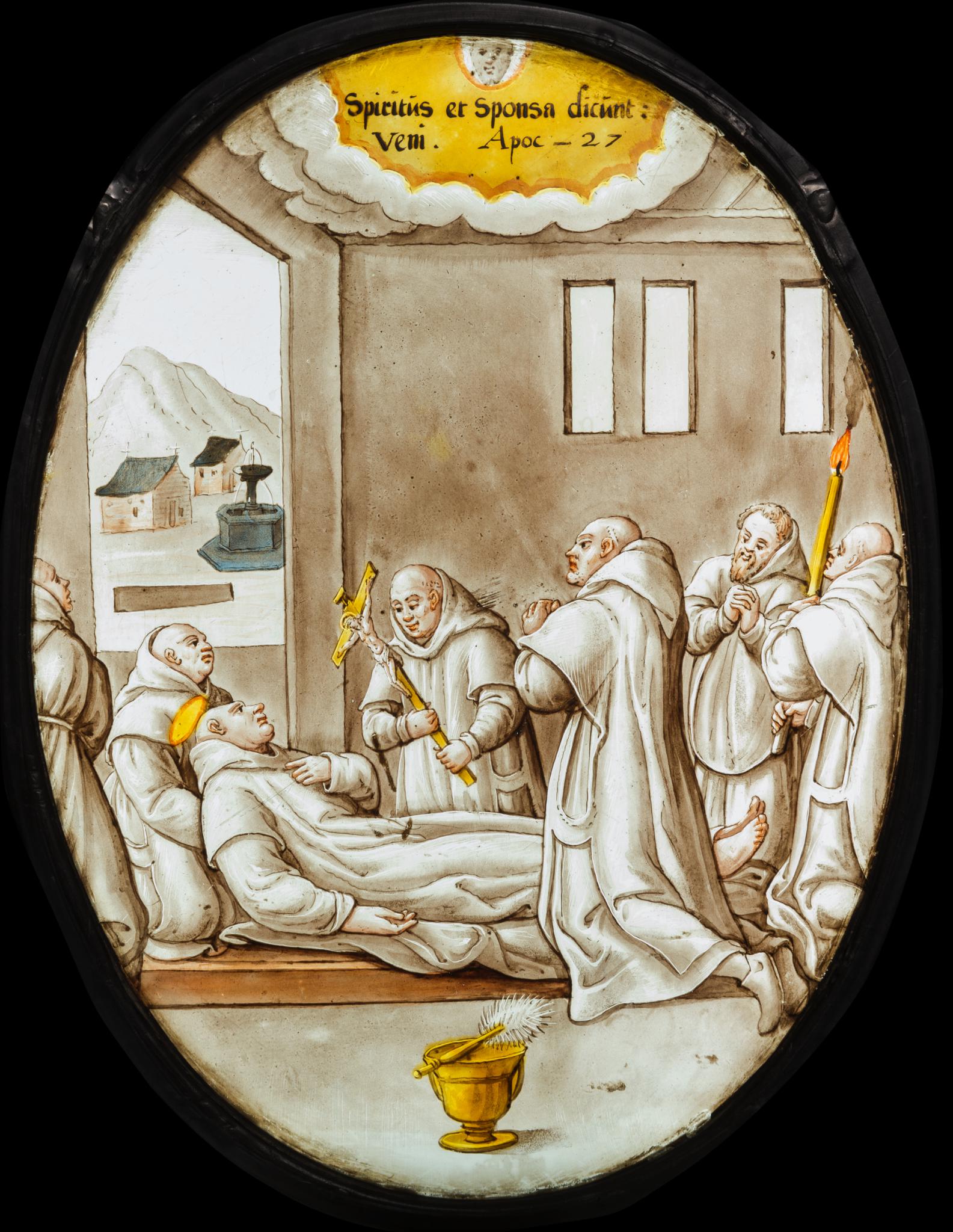Research
Diese isolierte Ovalscheibe, die über den französischen Kunsthandel nach Frauenfeld gelangte, ist schwierig einzuordnen. Möglicherweise besteht ein Bezug zu den Kartäusern, deren Ordensgründer der hl. Bruno war. Da Kartausen jedoch in ganz Europa existierten, führt das zu keinen weiteren Hinweisen auf eine mögliche Herkunft der Scheibe. Ovale Scheiben mit Heiligendarstellungen waren in Flandern weit verbreitet (vgl. Berserik/Caen, 2007–14, Bd. 1, S. 75, 105, 106, Bd. 2, S. 15, 40, 85, 89, Bd. 3, S. 90–93; Beeh-Lustenberger, 1965, S. 239). Auch Süddeutschland käme aber als Herstellungsort in Frage (vgl. Husband, 1991, S. 83). Die Vergleichsbeispiele aus den genannten Regionen legen eine Entstehungszeit des Glasgemäldes im 17. Jahrhundert nahe.
Die Scheibe ist unpubliziert.
Dating
17. Jahrhundert
Period
1600 – 1750
Previous Locations
